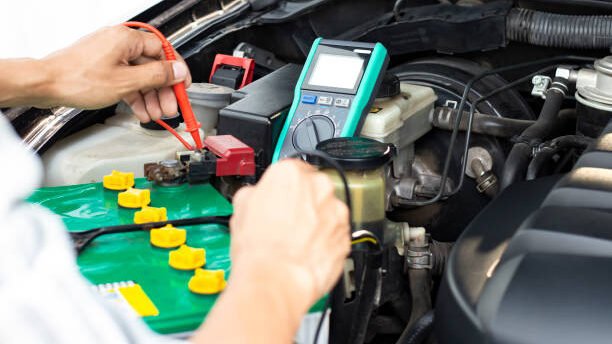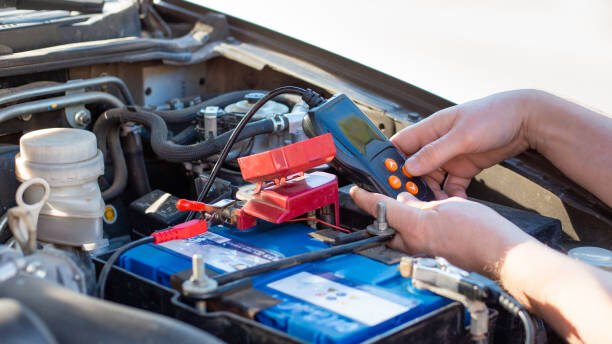Contents
How to Use a Multimeter to Test a Car Battery
Testing a car battery is essential for ensuring optimal vehicle performance and preventing unexpected breakdowns. A multimeter is a handy tool that allows you to assess the voltage and health of your car battery quickly. In this guide, we’ll walk you through the process of using a multimeter to test a car battery, empowering you to identify potential issues and take proactive measures to maintain your vehicle’s reliability.

Understanding the Importance of Testing a Car Battery
Before diving into the testing process, let’s briefly discuss why testing a car battery is crucial for vehicle maintenance.
1. Battery Voltage
The voltage of a car battery indicates its state of charge. Testing the battery voltage helps determine if it has enough power to start the engine and operate electrical components.
2. Battery Health
Over time, car batteries can degrade due to factors such as age, usage patterns, and environmental conditions. Testing the battery’s health assesses its capacity to hold a charge and deliver sufficient power.
3. Early Detection of Issues
Regular battery testing allows you to identify potential problems early, such as low voltage or reduced capacity. Addressing these issues promptly can prevent unexpected breakdowns and extend the life of the battery.
Using a Multimeter to Test a Car Battery
Now, let’s explore how to use a multimeter to test a car battery accurately.
Step 1: Gather Your Tools
Before you begin, gather the necessary tools and equipment:
-
- Multimeter: Ensure your multimeter is set to the DC voltage setting and has fresh batteries if it’s not auto-ranging.
-
- Safety Gear: Wear safety goggles and gloves to protect yourself from any potential hazards.
-
- Clean Cloth: Use a clean cloth to wipe away any dirt or debris from the battery terminals.
Step 2: Prepare the Battery
Ensure the car is parked in a safe and well-ventilated area, and the engine is turned off. Open the hood of the car and locate the battery. Before testing, inspect the battery terminals for any signs of corrosion or damage. If necessary, clean the terminals using a battery terminal cleaner and a wire brush.
Step 3: Set Up the Multimeter
Set your multimeter to the DC voltage setting. If it’s not auto-ranging, select an appropriate voltage range higher than the expected voltage of your car battery, typically around 12 volts. Insert the red probe into the multimeter’s positive (red) socket and the black probe into the negative (black) socket.

Step 4: Test the Battery Voltage
With the multimeter set up, it’s time to test the battery voltage:
-
- Turn Off Accessories: Ensure all electrical accessories in the car, such as lights and radio, are turned off to avoid interference with the test.
-
- Connect Probes: Touch the red probe to the positive terminal of the battery (marked with a plus sign, usually red) and the black probe to the negative terminal (marked with a minus sign, usually black).
-
- Read the Voltage: The multimeter will display the voltage reading on its screen. A healthy car battery should typically show a voltage reading between 12.4 and 12.7 volts when the engine is off. If the voltage reading is significantly lower, it may indicate a weak or discharged battery.
Step 5: Test Battery Under Load (Optional)
For a more comprehensive test, you can perform a load test on the battery:
-
- Start the Engine: If the battery voltage was within the normal range in the previous test, start the engine and let it run for a few minutes to charge the battery.
-
- Turn on Accessories: With the engine running, turn on the headlights, air conditioning, and other electrical accessories to put a load on the battery.
-
- Re-Test Voltage: While the accessories are on, re-test the battery voltage using the multimeter. A healthy battery should maintain a voltage above 12 volts under load. If the voltage drops significantly, it may indicate a weak or failing battery.
Step 6: Interpret the Results
Based on the voltage readings obtained, you can interpret the condition of your car battery:
-
- Normal Voltage: Voltage readings within the normal range indicate a healthy battery.
-
- Low Voltage: Low voltage readings may suggest a weak or discharged battery that needs recharging or replacement.
-
- Voltage Drop Under Load: A significant drop in voltage under load indicates a battery that may struggle to provide sufficient power and may need replacement soon.

Step 7: Take Necessary Action
Depending on the results of the battery test, you can take appropriate action:
-
- Recharge: If the battery is discharged, recharge it using a battery charger or by driving the car for an extended period to allow the alternator to recharge it.
-
- Replace: If the battery consistently shows low voltage readings or fails the load test, it may be time to replace it with a new one.
By following these steps and regularly testing your car battery using a multimeter, you can ensure reliable starting performance and prevent unexpected breakdowns due to battery issues.
Tips for Accurate Testing
To ensure accurate results when testing a car battery with a multimeter, consider the following tips:
1. Use a Fully Charged Battery
For the most accurate voltage readings, ensure that the car battery is fully charged before testing. Avoid testing a battery immediately after driving, as the voltage may be temporarily elevated.
2. Clean Battery Terminals
Before testing, clean the battery terminals and cable connections to ensure good electrical contact. Corrosion or buildup on the terminals can affect the accuracy of the readings.
3. Safety Precautions
Exercise caution when working with car batteries, as they contain sulfuric acid and can produce explosive gases. Wear appropriate personal protective equipment (PPE) such as gloves and safety glasses, and avoid sparks or open flames near the battery.
Conclusion
Testing a car battery with a multimeter is a straightforward process that can provide valuable information about its voltage and health. By following the step-by-step guide outlined in this article and adhering to safety precautions, you can confidently assess your car battery’s condition and take proactive measures to ensure reliable vehicle performance.
Remember to perform regular battery tests as part of your vehicle maintenance routine and address any issues promptly to avoid unexpected breakdowns. With proper care and attention, you can maximize the lifespan of your car battery and enjoy trouble-free driving for years to come.
FAQs (Frequently Asked Questions)
Q: What voltage should a car battery have when fully charged?
Q: How often should I test my car battery?
Q: Can a multimeter detect other battery issues besides low voltage?
Q: What should I do if my car battery fails the voltage test?

